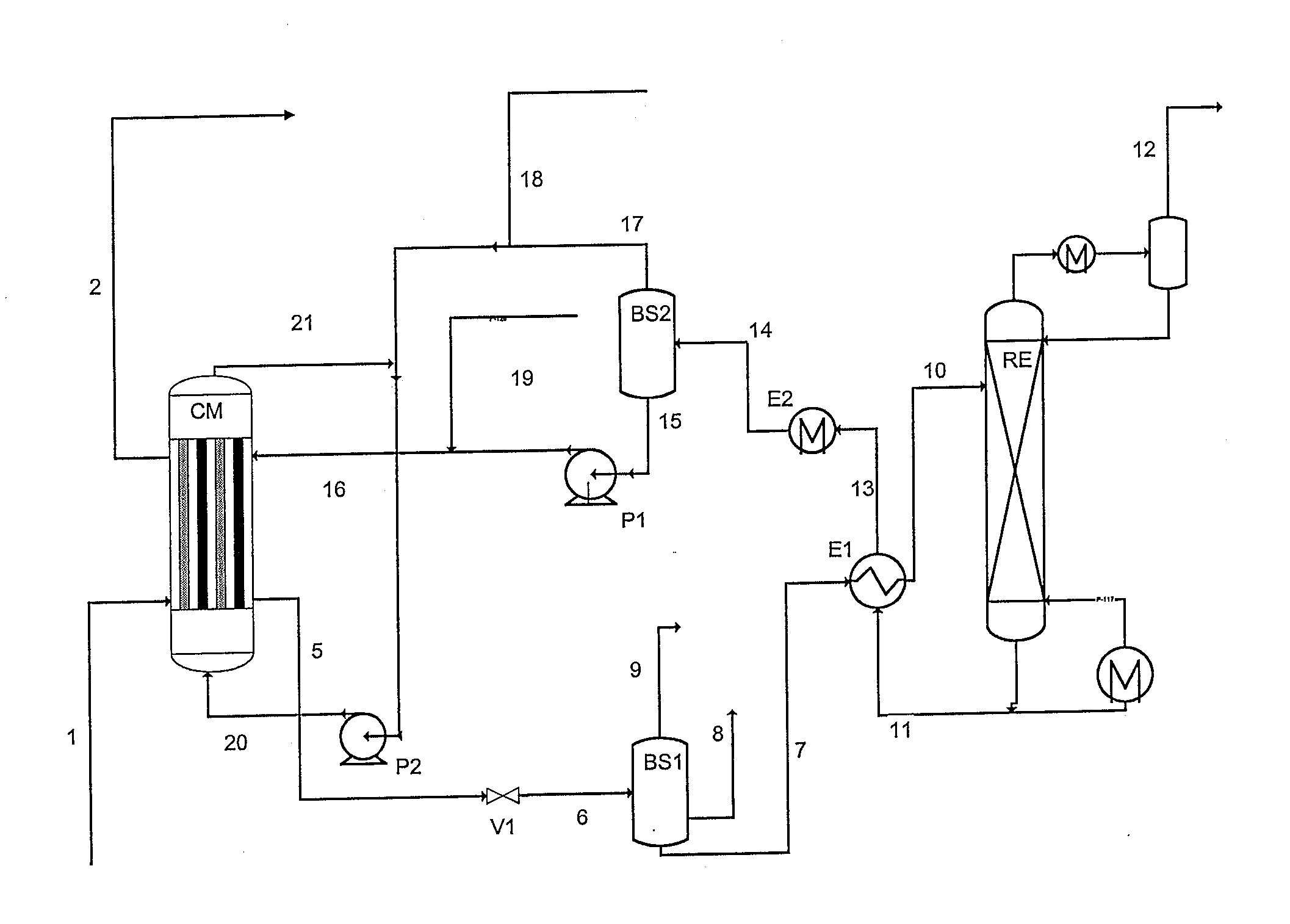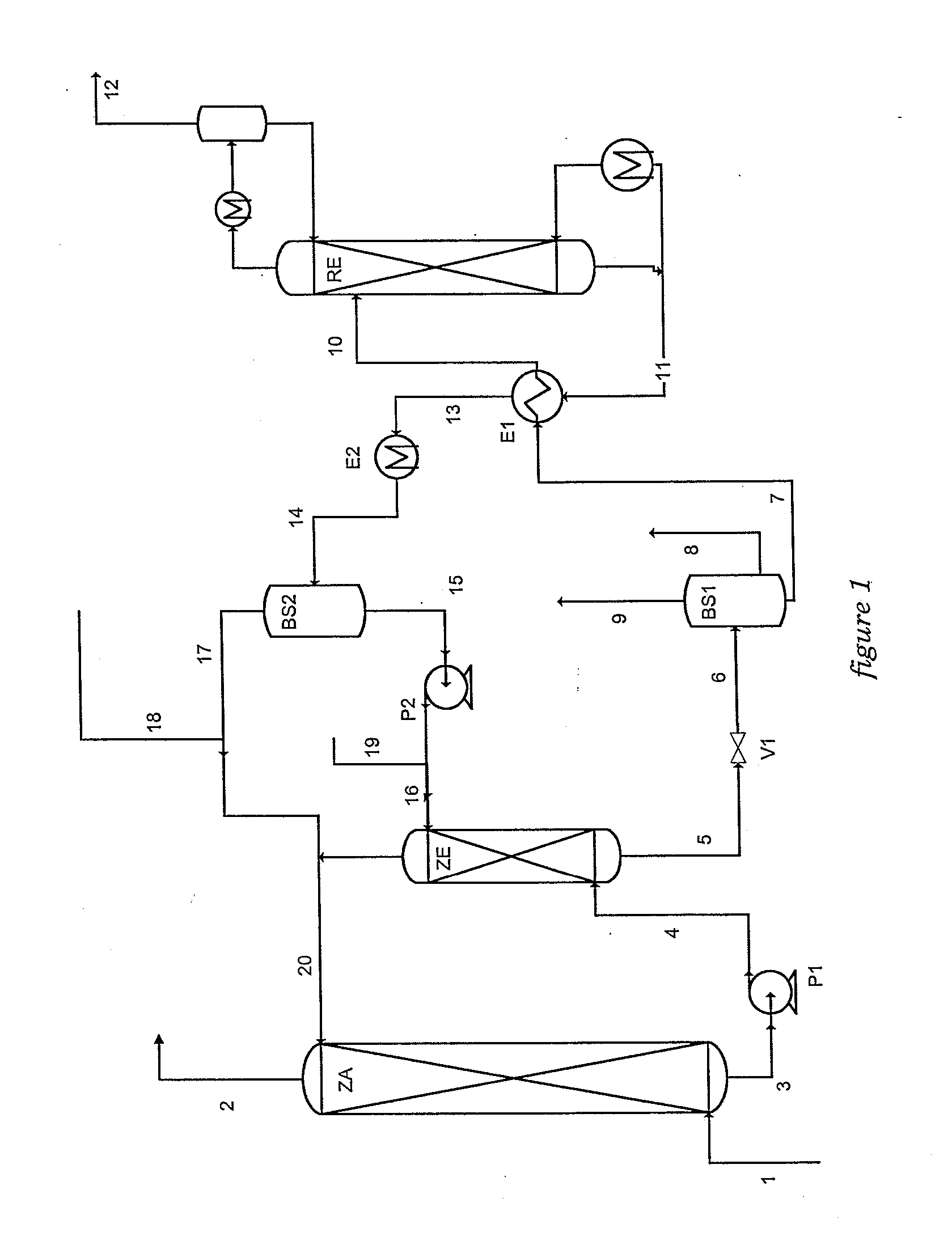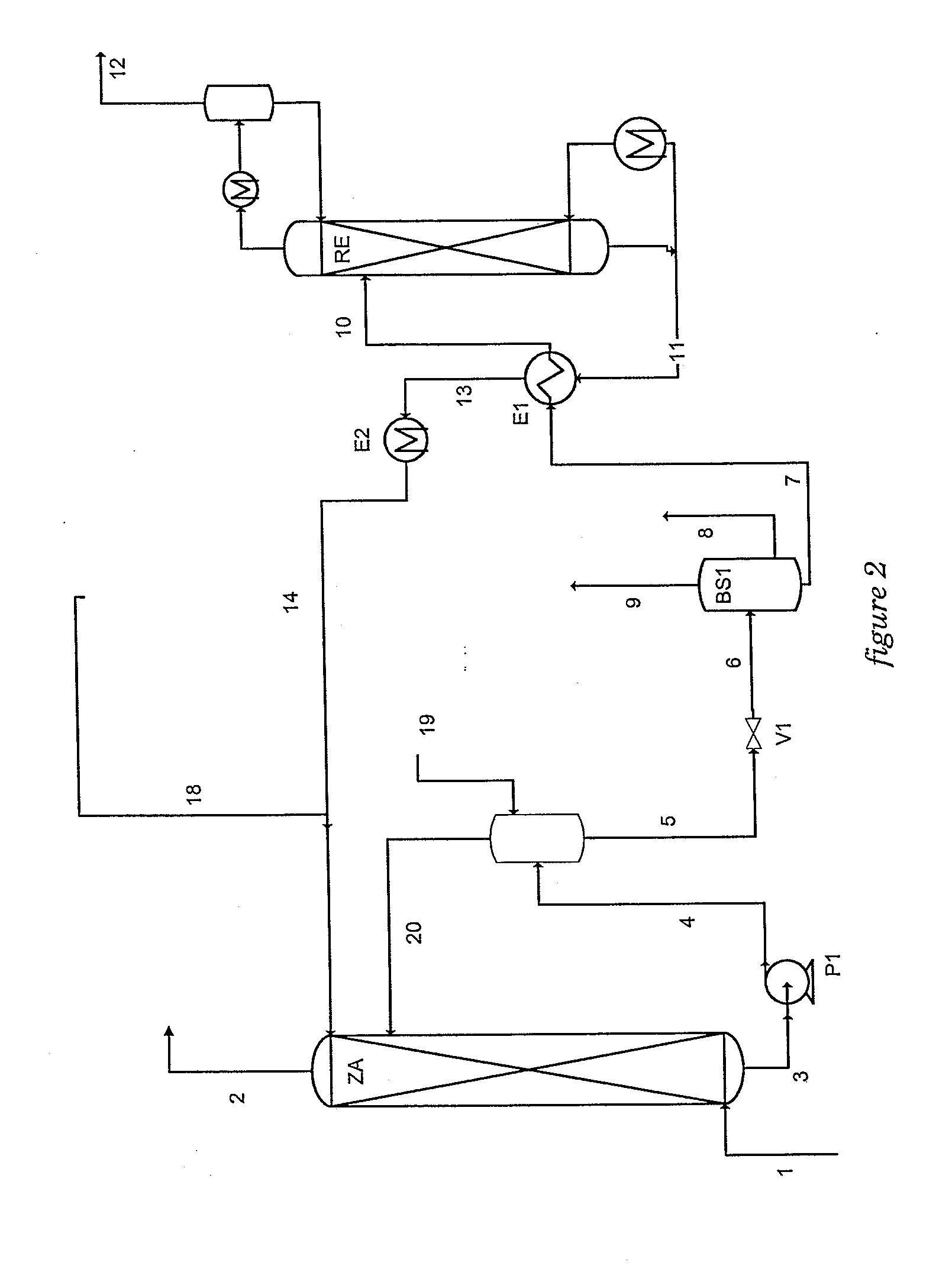Method of deacidizing a gaseous effluent with extraction of the products to be regenerated
a gaseous effluent and extraction method technology, applied in the direction of inorganic chemistry, dispersed particle separation, sulfur compounds, etc., can solve the problems of reducing the efficiency of the absorbent solution, affecting the regenerative efficiency of the separation agent,
- Summary
- Abstract
- Description
- Claims
- Application Information
AI Technical Summary
Problems solved by technology
Method used
Image
Examples
Embodiment Construction
[0030] In FIG. 1, the gaseous effluent to be deacidized flows in through line 1. The deacidizing method diagrammatically shown in FIG. 1 can be applied for treating various gaseous effluents. For example, the method allows to decarbonate combustion fumes, to deacidize natural gas or a Claus tail gas. The method also allows to remove the acid compounds contained in synthesis gas, in conversion gas in integrated coal or natural gas combustion plants, and in the gas resulting from biomass fermentation.
[0031] Within the context of combustion fumes decarbonation, the typical composition of a gaseous effluent corresponds, by volume, to 75% nitrogen, 15% carbon dioxide, 5% oxygen and 5% water. Various contaminants such as SOx, NOx, Ar and other particles are also present in smaller proportions, they generally represent less than 2% by volume. The temperature of these fumes ranges between 50° C. and 180° C., the pressure is generally below 15 bars.
[0032] Natural gas essentially consists o...
PUM
 Login to View More
Login to View More Abstract
Description
Claims
Application Information
 Login to View More
Login to View More - R&D
- Intellectual Property
- Life Sciences
- Materials
- Tech Scout
- Unparalleled Data Quality
- Higher Quality Content
- 60% Fewer Hallucinations
Browse by: Latest US Patents, China's latest patents, Technical Efficacy Thesaurus, Application Domain, Technology Topic, Popular Technical Reports.
© 2025 PatSnap. All rights reserved.Legal|Privacy policy|Modern Slavery Act Transparency Statement|Sitemap|About US| Contact US: help@patsnap.com



